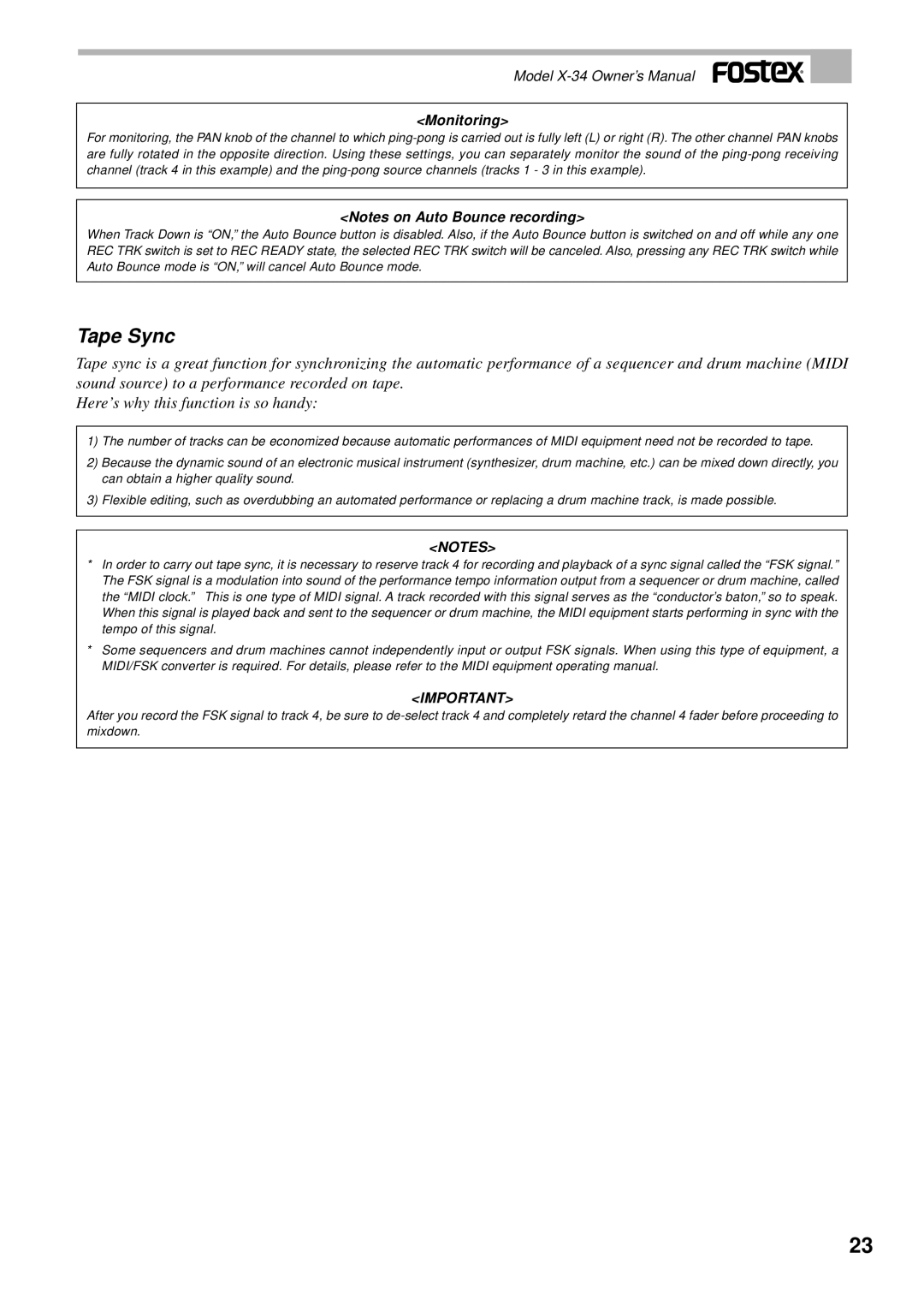
Model
<Monitoring>
For monitoring, the PAN knob of the channel to which
<Notes on Auto Bounce recording>
When Track Down is “ON,” the Auto Bounce button is disabled. Also, if the Auto Bounce button is switched on and off while any one REC TRK switch is set to REC READY state, the selected REC TRK switch will be canceled. Also, pressing any REC TRK switch while Auto Bounce mode is “ON,” will cancel Auto Bounce mode.
Tape Sync
Tape sync is a great function for synchronizing the automatic performance of a sequencer and drum machine (MIDI sound source) to a performance recorded on tape.
Here’s why this function is so handy:
1)The number of tracks can be economized because automatic performances of MIDI equipment need not be recorded to tape.
2)Because the dynamic sound of an electronic musical instrument (synthesizer, drum machine, etc.) can be mixed down directly, you can obtain a higher quality sound.
3)Flexible editing, such as overdubbing an automated performance or replacing a drum machine track, is made possible.
<NOTES>
*In order to carry out tape sync, it is necessary to reserve track 4 for recording and playback of a sync signal called the “FSK signal.” The FSK signal is a modulation into sound of the performance tempo information output from a sequencer or drum machine, called the “MIDI clock.” This is one type of MIDI signal. A track recorded with this signal serves as the “conductor’s baton,” so to speak. When this signal is played back and sent to the sequencer or drum machine, the MIDI equipment starts performing in sync with the tempo of this signal.
*Some sequencers and drum machines cannot independently input or output FSK signals. When using this type of equipment, a MIDI/FSK converter is required. For details, please refer to the MIDI equipment operating manual.
<IMPORTANT>
After you record the FSK signal to track 4, be sure to
23
